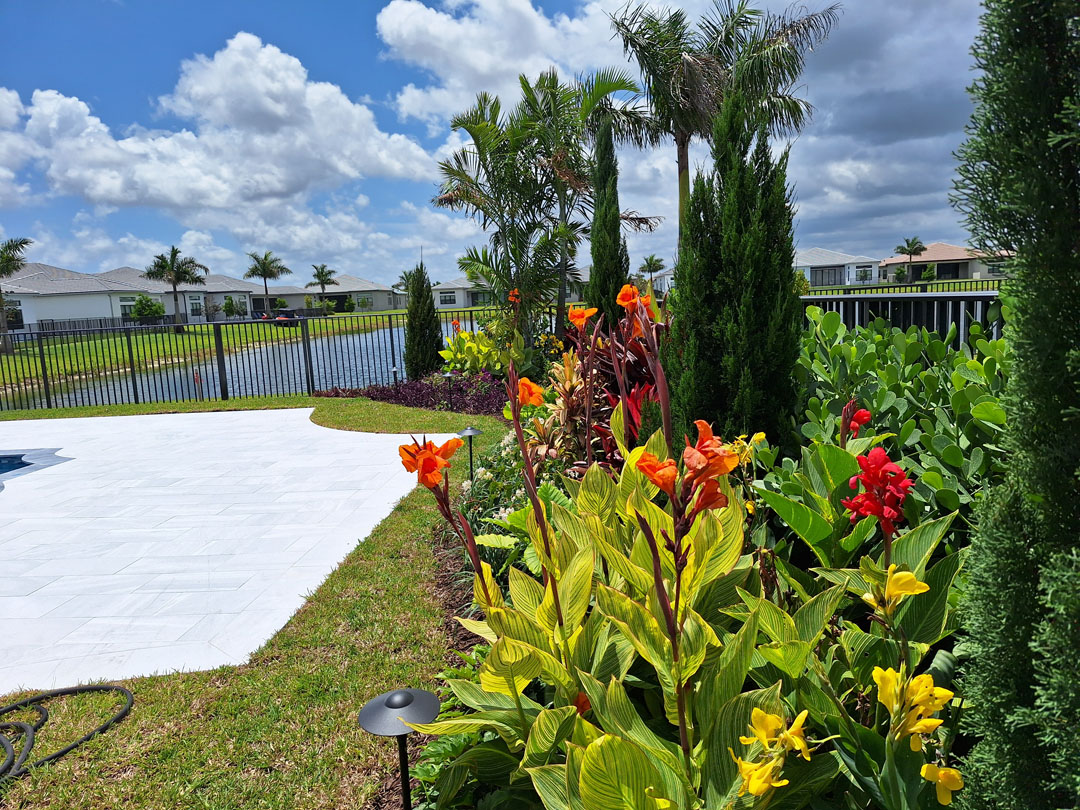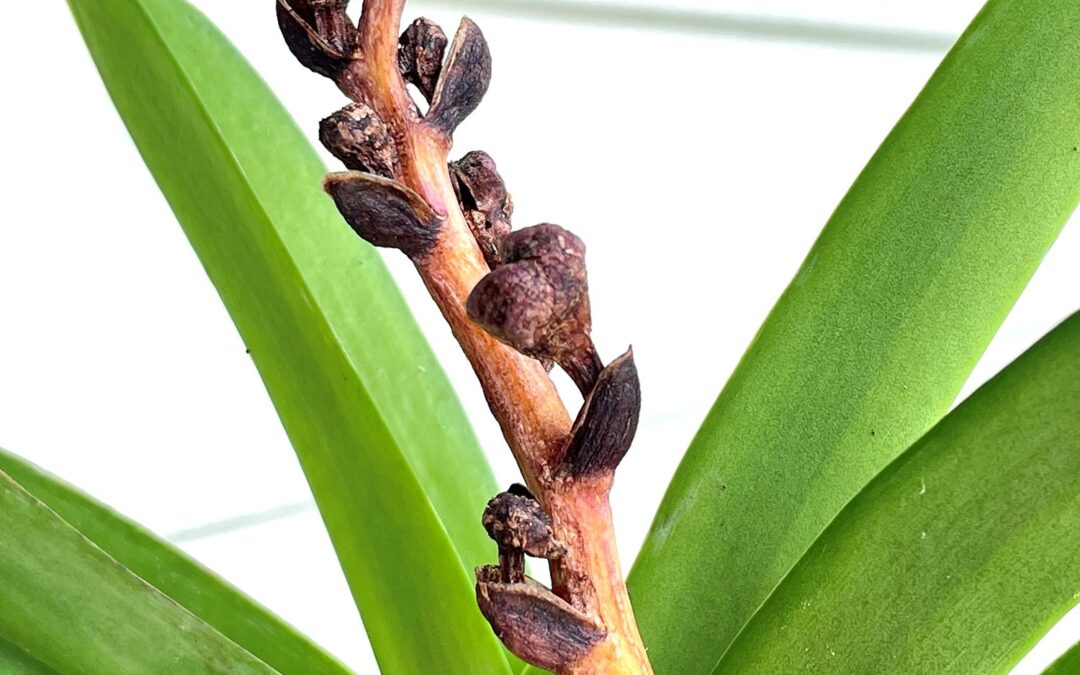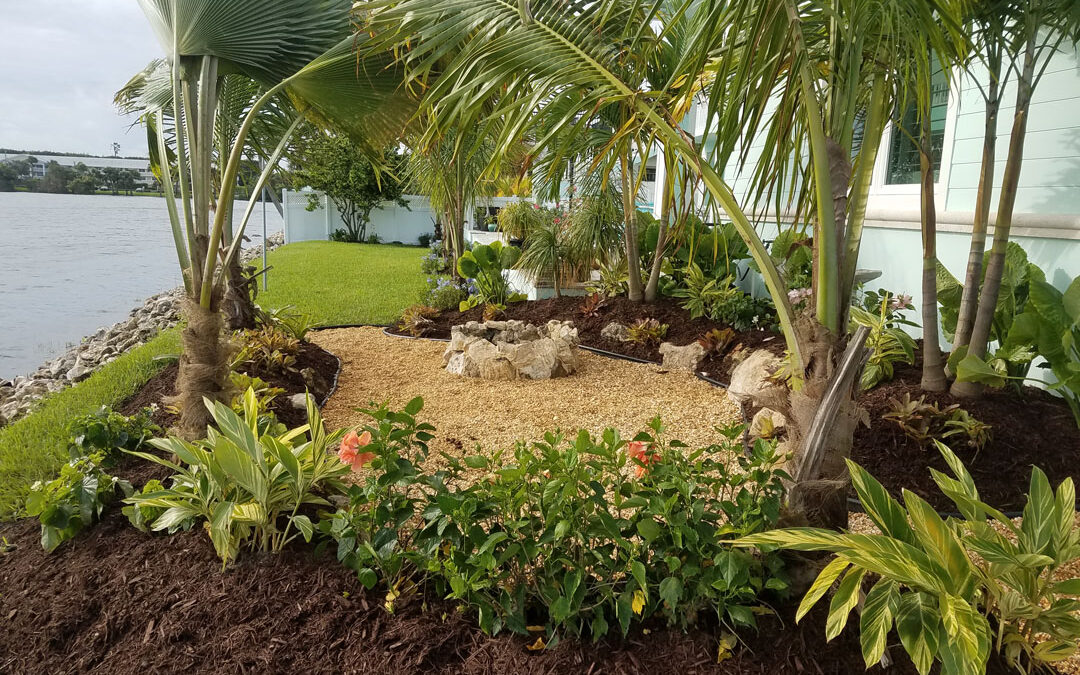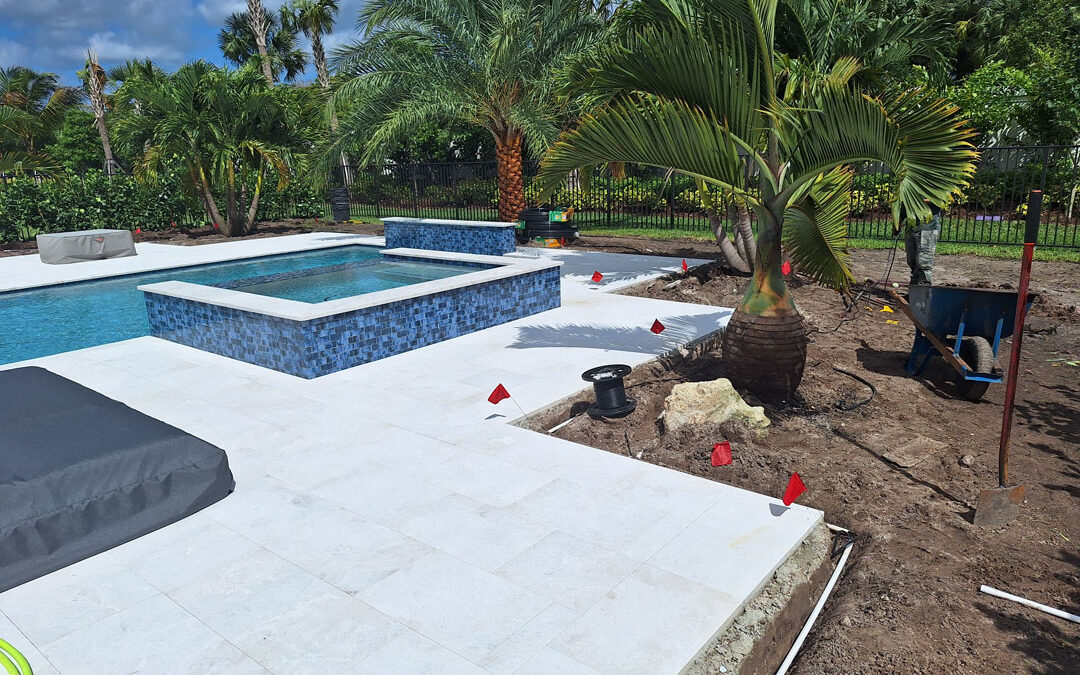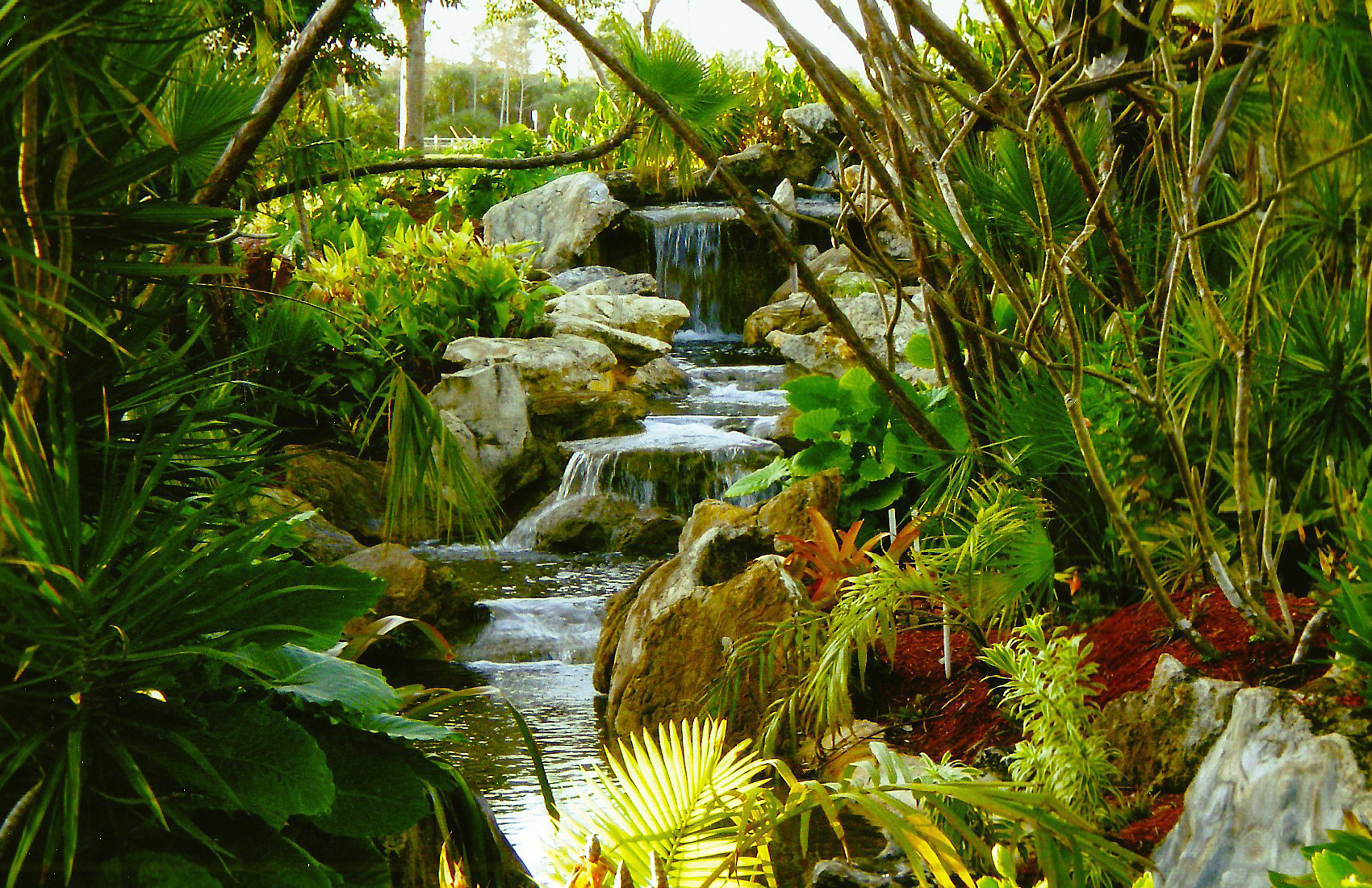The common question, “ How can I get more Blooms from my Plants and Trees?” Is an expedition to say the least to look through the many different factors that can have an effect on the answer for your particular blooming plant or tree on your property.
The simple answer that all the rest are stemming from for us, that we began this article with is the rule of thumb for the great majority of blooming plants and trees :
“More Sunlight, more blooms.
Less Sunlight, less blooms”
As we go through different situations and circumstances which can each have an effect on the output of blooms and flowers in your own property, it is suggested keep this simple rule in mind as the starting point. Can’t under estimate the effect on the power of sunlight in not only sustaining plants and trees and all of us really, but notably as well in the effects of creating blooms and flowers.
This leads to the point of this section on the Nature of the Plants and Trees themselves. One educator we’re referencing made a similar effort to answer specifically : ‘What makes plants bloom?’ We take a quick look here at the internal plant and tree makeup in how the process of blooms occur.
In his article, “What makes plants bloom at different times of the year?”, October 29, 2021
, By Christopher Enroth, University of Illinois, Extension, Good Growing, he highlights a number of direct points and factors involved in the process.
General Types of Blooming Plants and a Life Cycle Influence
Beginning with the life cycle of plants which we cover in different sections of this article, the focus being on plants as they are classified from the smaller to the larger sizes; smaller bloomers being the annuals which may last a season or a year, biennial plants which may last 2 years, and perennial plants that may last multiple years.
The larger of these 3 categories being the perennials, recognized as the bushes or plants that can last many years, even 10, 15, 20 years or better in some varieties and different plant species, many of the longest lasting recognized in the category of hardy hedges possibly.
The smaller plants, “When it comes to annuals (summer or winter) they have one season to reproduce. These plants do not invest much to create an expansive root system. Because making roots and making flowers costs energy. Annuals typically expend their energy on flower and seed production.” (Photo here shows Delphinium flower with blue, purple bloom, with an assortment of yellow, white & pink blooming annual flowers)
“Biennials are alive for two years. The first year is spent growing foliage and building the necessary energy for flowering. Then the second year a flower stalk shoots in the air to create seeds for the next generation and then the plant dies.”
Photo here shows full blooming moment of the biennial Penta flowers with a purple bloom, below a Robellini Palm (AKA – Pygmy Date Palm) & Green Island Ficus plant behind the Penta flowers. Please note, this is a full blooming example, they may achieve a bouquet moment like this and it may lasts a week, several weeks or longer and then re-generate on average.
“Perennials survive year after year, so they have time to invest in their root resources before needing to flower. When grown from a seed a perennial may not flower for its first two to three years. That’s because there’s a lot of work happening below ground on building a root system. Perennials often (but not always) flower in the middle to later in the growing season.”
An important note, while this article sites the area of Illinois, our South Florida climate does go through the same change with season, but much milder in the winter and we have much less loss because of winter. Very little winter loss actually occurs in our area for regular perennials, but we do have a variety of plants that do regress such as Canna Lilies and Heliconias for example. As part of these plants winter regression, both the Canna and the Heliconia should have a good trim back during the fall or winter. The general growing in our area does happen at a reduced rate than the warmer spring and summer months.
Photo here shows the Perennial Hibiscus in a hedge form here with an orange bloom. Full of buds and blooms in this example. They may achieve moments like this that can last weeks or even months and then go through periods of re-generation.
As this article hopes to point out, even with the same exact species of plants, not every plant, even the same variety may produce the same, may have the same planting conditions on a property, same light, drainage conditions, etc. This article hopes to help provide answers that may help and for factors to consider, whatever the conditions of your own property may be.
Seasonal Bloomers : Some Plants and Trees bloom at a Specific Time of Year
When learning about a plant or tree you may have, appreciate somewhere or some that you might possibly like to get, and you’re learning of them, generally we’ll categorize the plants and trees that bloom into 2 simple categories here :
- Those plants and trees that are capable of blooming at any time during the calender year.
- Those plants and trees that will bloom during a specific season or time of the calender year.
The smaller category being those that bloom during a specific season or time of year are the smaller grouping we come across that are produced and grown by the vast network of growers that we come across and deal with, as well as what we see in neighborhoods and communities throughout our own South Florida area.
There seem to be more common and popular options for Summer blooming trees in our area than Winter blooming tree options. One hardy tree that will bloom during the winter time in our area for example is the Hong Kong Orchid tree which can have tree blooms of white, pink or purple varieties are a popular choice in our area. Typically we’ll see any of these three different varieties scattered throughout our area in residential, municipal and commercial landscape settings. They will come on during the fall around November and can go on through the winter into March typically and if you do happen to see a bloom during a different season, it is a rarity.
For spring and summer blooming tree options, there is a much larger list such as Royal Poinciana, Jacaranda, Tabeubuia tree varieties, Crepe Myrtle varieties, Cassia Trees to name a few durable and hardy, showy options. In the photo here showing a full blooming example of a Hong Kong Orchid Tree with Purple blooms.
There are also a number of plants that will bloom prominently during one season or period of the calendar year and if a bloom is spotted at any other time it is again, a rarity. Plants of this seasonal type are the Gardenias for example in our area, a favorite hardy option of ours being the “Miami Supreme” Gardenia variety, especially hardy and a large, beautiful and fragrant flower. (note on fragrances, if someone is struggling with allergies, might be good to stay away from a number of fragrant plants).
The Canna Lily and Heliconia, which go more dormant and should be trimmed back hard each winter are species of plants which will produce very well during the warmer months of the year and then again, should be trimmed back during the winters to help them have better blooming production during the bulk of the warmer year here.
In the photo here the Perennial Canna Lily (Yellow bloom) and Hibiscus Bush (Peach bloom) are both visible, along with a Dwarf Tibochina (Purple bloom) in front of them and a touch of the Auntie Lou Ti Plant & Red Sister Ti Plant, which both have Red leaves of different shades and slightly different shaping.
Crepe Myrtles are another tree which blooms vibrantly it may be thought during the spring, summer and sometimes might even appear in early fall, but then drop their leaves during the fall and should be trimmed back hard for those wishing for a tighter, more abundant cropping of canopy and blooms the following spring and summer.
These are plants and trees which the species themselves are largely directed on their own time table and clock of when they will bloom. It’s their own nature. If you’re looking for these species or these kinds of plants or trees to bloom during different times of year, this is the answer why they won’t.
The Year Round Blooming Plants & Trees
This category can be the more challenging to understand why they aren’t blooming at different points as they are capable of blooming at any time during the full calendar year. An few examples of some hardy, smaller, ornamental trees in our South Florida Area that are capable of producing blooms at any point during the calender year are the Tibochina Tree (Purple bloom) with family species of Tibochina bushes; Jatropha Tree (Red bloom and also available as a bush), and the Hibiscus Trees available in a variety of colors such as White, Pink, Orange, Yellow and Red blooms for example, and the Hibiscus is also available as a bush in our South Florida landscape as well.
Photo here shows a full blooming canopy moment for the Tibochina Tree. Hardy, long lasting ornamental, easiest kept between 8 foot to 12 foot height it might be thought for a low maintenance, smaller tree option.
People vary in their expectations, and the varying expectations can be extreme. Some might think that if a plant for example is capable of blooming at any time of the calendar year, why isn’t it doing that? Why isn’t the plant blooming consistently all year round ?
We’ll look at the Perennial plants for this answer as the early section gave some insight into the smaller and shorter lived annual flowers and biennial plantings.
An Example of the benefits of Trimming to quicken and increase bloom cycles and outputs in some plants
With Perennials and there blooms, there’s more of a cycle it may be thought. Similar to an example for a Rose Bush the Brindabella Rose, (featured with red blooms in the photo here) one of the hardiest, if not the least maintenance, most durable Rose Bush that we’ve come across in our South Florida area. Rose bushes typically are a lot of work and can be delicate and temperamental, this variety can be planted with a regular perennial landscape, receiving the same care and do well which in our view is a rarity for a hardy Rose Bush.
With this plant, an easy example with looking for a crop of flowers to prune or trim that can be collected as part of an arrangement indoors, easy to see the clock work on the production cycle of these collected flowers possibly more than most. With their size, the look and fragrance, a favorite for gifting, the Rose is well known for its place in desired flowers for arrangements.
In our South Florida climate, with regular fertilizing, 3 to 4 times per year, good soil and standard watering for a regular landscape, getting blooms every 3 months, each quarter is a possibility that can be attained with care and ease it may be thought. Trimming the plant each quarter, taking those long stem roses from the plant, maybe not all at once depending on the output, leaving some and collecting or letting them go their own natural course on the bush and then trimming after the flowers have been spent. When trimming after the flower is spent, or taking a cutting with a long stem, good to trim this plant a foot or 2 or more lower down on the stalk possibly to help to re-thicken the grouping and quantity of lower branches, helping to continually create a fuller blooming plant.
Now this same trimming concept can be taken with any blooming plant.
Taking the bloom off for a bouquet or indoor arrangement, no matter the bush flower variety on your property, cutting them back further, helping to grow a tighter cropping and canopy, can increase the bloom output with a tighter, fuller canopy to the plant. The same with the trees.
Trimming is a helpful part of growing and maintaining. There’s nutrients and water being taken in not only through the ground but also through the branches and leaf systems. When you cut back on a tree or plant, there’s more energy of new growth nutrients going to a now smaller area and the result is most typically an outburst of new, concentrated growth from that trimmed back plant or tree.
Same amount of energy that was used to feed every extremity of the plant or tree at its larger size, is the same amount of energy mainly coming from the roots that is now going to that suddenly smaller plant or tree, so the burst of growth is a result of that.
Now, a good hard trim can be a real boost and benefit for an aging or neglected plant or tree, if not sure about how much to trim, there are plenty of articles and some videos no doubt that might be a good thing to check before trimming too hard on plants you’re not sure of. We have some instructions generally in our Landscape Care Notes on our own website here we’ve put together that we hope some will find helpful as well.
That link to the Care Notes is :
The Nature or Constitution of the Individual Plant or Tree and that affect on blooms
This aspect might help to better understand that rare or more drastic example, where you have some plants and trees that are doing great with blooming and their health, and close by, you have examples of the same species of plant or tree not doing so well.
You might have on your property examples of plants or trees that are truly remarkable and you point to as a great example of what a certain plant can do. Maybe even memorable to any who appreciate landscape beauty and agree with you, you’ve got a great plant or tree that produces a high amount of quality flowers that is above average. (Photo here show a full bloom moment of the Perennial Thryallis Bush with Yellow blooms)
This factor, we might attribute to the strength of that specific plant or tree’s own Constitution. It’s own makeup.
For example, let’s think about an area of plantings, lets say for conversation there’s 20 of the same plants, planted at the same time, brought to your property from the same place, treated the same, fertilized, watered and trimmed the same and some of the plants produce a significant and recognizable amount more blooms than others in the same grouping. Or when one or two plants die and an entire grouping that were planted the same way, same treatment might struggle or die off and the rest are fine. (Photo here showing a group of new plantings with a dead plant amongst a grouping of healthy new installations, but one has died off, noted by the plant with no leaves on it and only showing stick branches.)
They have had the same life, exactly. Same soils, probably propagated from the same originating plant by the grower, same treatment in your property, but different bloom output. Further, while the conditions are the same, there’s nothing detracting from their health from soils, weather, drainage issues, insects, disease, no neglect; none of these negative factors, just an equal, healthy, sunny area that is shared in the same close vicinity.
Why is that? Why and How can there be a different bloom output from plants that were created from the same starting maternal plant and had an identical life experience and some can produce significantly more blooms per plant than others in the same immediate planting bed ?
The answer is simple and a mystery at the same time.
Nature.
It’s the same reason why all the members or the children of a large family aren’t the same height.
Imagine a family of 7 or more children. A number of them might be the same height, but there may be a few significantly taller and one or two significantly shorter. Even with two brothers or two sisters or a brother and sister in smaller families, one can be much taller than the other.
Same with plants and trees. Some might be created with a stronger or more bloom producing physical constitution which all things being equal, makes these plants or trees larger or more healthy, longer lasting and better bloom producers.
That is all things being equal, and no signs of neglect, or issues with watering or soil problems, insects, etc. that would explain anything detracting. This is the short answer to those looking at a grouping of healthy plants, in a sunny and healthy environment and there are some that out produce the others in a significant way.
We chalk this up to nature, same with the differences in people in the same families.
Photo Credit : CNN, “World’s tallest man meets shortest man”
Updated 2:22 PM EST, Thu November 13, 2014
https://www.cnn.com/2014/11/13/living/gallery/worlds-shortest-tallest-man/index.html
Recycling or Re-generation of the plant or tree to produce blooms. Plants go through blooming cycles.
To really try to cut right to the answer on this aspect might be to go directly to the question, “Why do plants and trees go through bloom cycles?”
So while the importance of trimming should be appreciated in helping to keep plants in a better shape, more thick and lush and keeping a better concentration of the plant or trees own harvested nutrients in a more efficient way to produce blooms, more frequently, there’s still a question some might be asking, why don’t they bloom all the time ?
The “Full, Blooming Bouquet Moments”. Same Plant, Different Moments. Blooms Happen in Moments Simply Put, they are not steady and never ending, they go through Cycles.
The 2 Photos here below show 2 different planting examples of the same set up of the Perennial plant the Yellow Ixora Maui (showing Yellow blooms) and both are in the same setting under a triple stemmed Robellini Palm (also known as a Pygmy Date Palm). They are both perfectly healthy. One is a little fuller and further along in the growth and being established, possibly 6 months to a year older than the example that is not as full.
Is there anything wrong with the Ixora that is not blooming as much ?
The answer is no.
This is an example of how blooms may burst out into a “full bouquet moment” and these “full, bouquet moments” may last a week, they may last several weeks, they might even last for multiple months holding this same full display of blooms for some that are that fortunate.
Why is that? Why is one blooming and the other not as much? Some plants, no matter the same species, may never have this “full, bouquet moment at all. This goes to a number of factors that we are covering that might hinder the plant’s health and with that, a weaker plant having a lessened output of blooms.
In other situations, with all things being equal, it could again be a matter of the individual plants constitution.
What these 2 photos also hope to represent, is that there is a period from full blooming, to a ‘restive’ state we might call it with possibly no blooms, and then, re-generating to bloom again. Similar to the seasons of a year, it is not a perpetual state of blooms that anyone should ever expect to experience with any plant or tree, even those that are capable of blooming year round.
Short answer here; Recycling or Re-generation of the plant or tree to produce blooms. They go through cycles.
Without going too deep into the science, to better understand how these bloom cycles work, we’re going to introduce some terminology to help clarify and be more direct in the explanation.
The terms Phytochrome, beyond the timing of cycles, of a plant re-generating, there is activity inside the plants and trees themselves which trigger the growth of flowers.
For example, the hormone florigen plays a major role in the creation of flowers that occurs inside the plant leaves. There is also the effects of light and the differing types of light which can help to trigger and create the occurrence of blooms to come forth from a plant or tree.
As we stated in the beginning, a major factor for blooms in the vast majority of plants :
“More sunlight, more blooms.
Less Sunlight, less blooms.”
Now we’re diving just a little deeper and looking at different types of light and how it can affect as we quote here a reference here and we’re starting with a definition or a simple understanding of the word “Phytochrome” which is a pygment, again the term Florigen which is a hormone, and the role of differing light qualities.
“Examining a rainbow, we can see the visible spectrum of light – red to violet. However, on the edges of the rainbow is radiation we cannot see with our eyes, but plants can sense using a pigment called phytochrome.”
With this type of light in mind, the University of Illinois author we’ve cited, moves on to talk of “light quality” differences as he explains :
“Light quality or levels change throughout the year. On June 21, the longest day of the year for us in the Northern hemisphere, there is a lot of direct sunlight hitting the planet. As the planet shifts on its axis to autumn, the quality of sunlight also changes as the light waves pass through more of the atmosphere. Therefore, not only does the duration of light change, so too does the quality of light change.”
“This shifting pattern of red and far-red light is picked up by the pigment phytochrome which releases the plant hormone florigen in the plant leaves. Florigen moves to the appropriate location within the plant (often the branch tips) and alters the vegetive cells into flowering cells thereby forming flower buds. These may open immediately or wait until next spring. This all goes back to those plant lifecycles mentioned way back at the beginning.”
Good Growing, “What makes plants bloom at different times of the year?”
October 29, 2021, Christopher Enroth, University of Illinois Urbana – Champaign; College of Agricultural, Consumer & Environmental Sciences , Illinois Extension
As an landscape industry professional who has designed and installed, and more importantly learned by backing our work and providing warranties on thousands of landscape designs and installations primarily in residential and commercial projects, we’ve seen examples of plants that have bloomed, of many varieties that are capable, at every time of year. Our South Florida climate is one of the best in our entire country for growth as our home state of Florida itself is one of the leading Agricultural states in our greatly resourced, richly abundant country.
As we can grow all year in our area, plants and trees are capable of blooming all year, that are of the species that can do so. If looking further to find out if the plants or trees that your questioning are capable of blooming at any time of year, and you’re a customer of ours and don’t know, email us a photo of your plant or tree to help provide us a visual of what’s going on and simply ask. It’s our pleasure to respond and we’re grateful for your efforts to reach out to us and that you’re caring for the landscape.
That’s a primary driver behind the efforts of the in depth articles like this one here. The better we can help support you with information, hopefully the better results will show in your own property. We can say without hesitation that those clients who follow our Landscape Care Notes Guidelines which are available on our website, verses those who don’t follow the guidelines – those who do have dramatically more beautiful, fuller, longer lasting and healthier landscapes than those who don’t.
If you’re not a client of ours or are outside our service area, primarily we serve Palm Beach County, Florida, we suggest you ask someone or some source that is knowledgeable in your area, a Nursery manager, a University Extension Program representative, a local landscaper or lawn maintenance person in your area or a local Landscape Architect or Landscape Design & Installation contractor if putting together a new landscape project for yourself, or working to improve the property and landscape you already have.
Either way, we hope your property brings you much satisfaction from a healthy, long lasting and beautiful landscape and if we helped to improve that situation at all, where ever you may be located, or answered any questions and helped even one person, that’s what we’re hoping for with this effort here.
We hope you get the blooms you’re going for !

